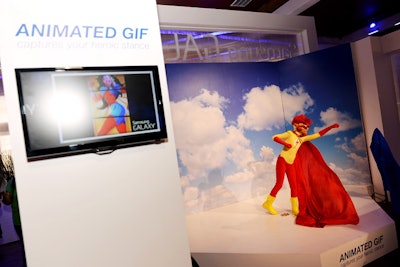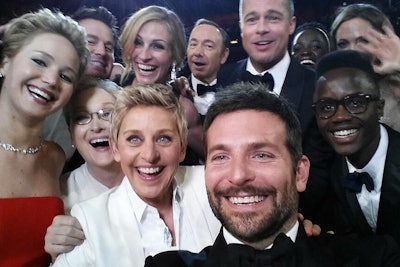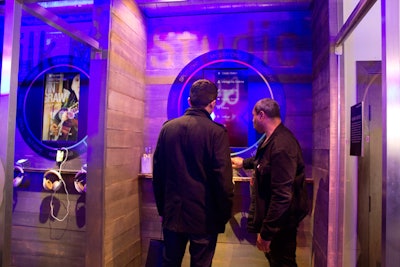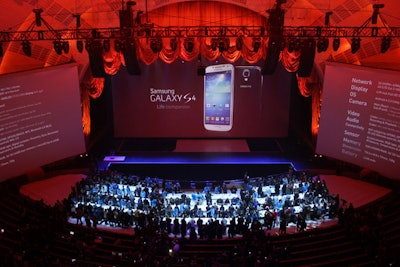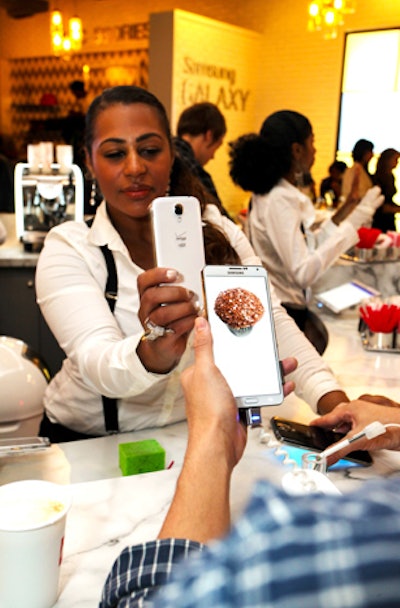Even after a hefty investment to introduce the Galaxy S III and Galaxy Note II with a whirlwind of events in 2012, the mobile division of the Korean electronics maker doesn’t seem to be slowing down. And while Samsung is winning awards for its mobile products, it’s also receiving recognition for its marketing: in 2013 chief marketing officer Todd Pendleton was dubbed a Brand Genius by Adweek; the company was given the title of the Most Viral Brand by Ad Age for 453.3 million video views; and the brand was ranked eighth on Interbrand’s 2013 list of Best Global Brands. It’s become the thorn in Apple’s side, outpacing the Silicon Valley giant in global sales and continuing to grow its market share in the United States.
That Samsung has emerged as a dominant player is due in no small part to astute event marketing. Positioning its devices as lifestyle companions has been at the core of many of its efforts, including the March 2013 launch of the Galaxy S4 smartphone at New York’s Radio City Music Hall that put actors in everyday situations on a multitiered stage set.
Perhaps its most successful ploy to date was at the 86th Academy Awards—which the smartphone company reportedly paid $20 million to sponsor—when host Ellen DeGeneres used a Samsung Galaxy Note 3 phone to snap a selfie with some of the biggest celebrities at the event. The photo succeeded in crashing Twitter and drew a record-breaking 3.4 million retweets.
Beyond the Oscars, the consumer tech brand is making waves at other big events, using activations to highlight key features of its devices and promote to a variety of consumer segments. At New York’s Mercedes-Benz Fashion Week this February, Samsung and Swarovski partnered up to build a glittering backstage lounge that showcased a limited-edition smartphone cover. In March, Samsung was in Austin, Texas, hosting a concert series during South by Southwest that featured Jay Z and Kanye West, and last August the brand made an appearance in Chicago for Lollapalooza, offering a henna-tattoo station that had guests scrolling through tattoo designs on electronic devices. And in July last year, Samsung was in San Diego for Comic-Con International, showcasing the capabilities of its Galaxy devices with areas to create GIFs, photos, and T-shirts.
The company even inked a $100 million sponsorship deal with the N.B.A. in October to become the official provider of courtside technology. Now when referees review plays, they do so conspicuously on tablets. The deal also dictates that Samsung devices are used during key league events such as the N.B.A. All-Star Game and the N.B.A. Draft.
Other experiential efforts to get customers to try its gadgets include the Galaxy Studio, which Samsung used at International C.E.S. in Las Vegas in January, in Olympic Park for this year’s Winter Games in Sochi, Russia, and during last year’s holiday season. The holiday promotion, which saw pop-up showrooms open in 10 separate locations across the country, was divided into different interactive sections. In the “café” area, for instance, visitors could use the phone-tablet hybrid Galaxy Note to order an Illy coffee or a mini Sprinkles cupcake. As added incentive for consumers to interact, Samsung invited visitors to participate in games and activities, earning points that could be redeemed for prizes.
Samsung’s constant presence at events and continued push to show how its devices can be used through interactive experiences has boosted its brand recognition and sales. The Galaxy S4 surpassed 10 million units globally sold within the first month of its release, and the Galaxy S5 smartphone is selling at a faster pace. The biggest question for many is: How long can the brand sustain its meteoric rise?
